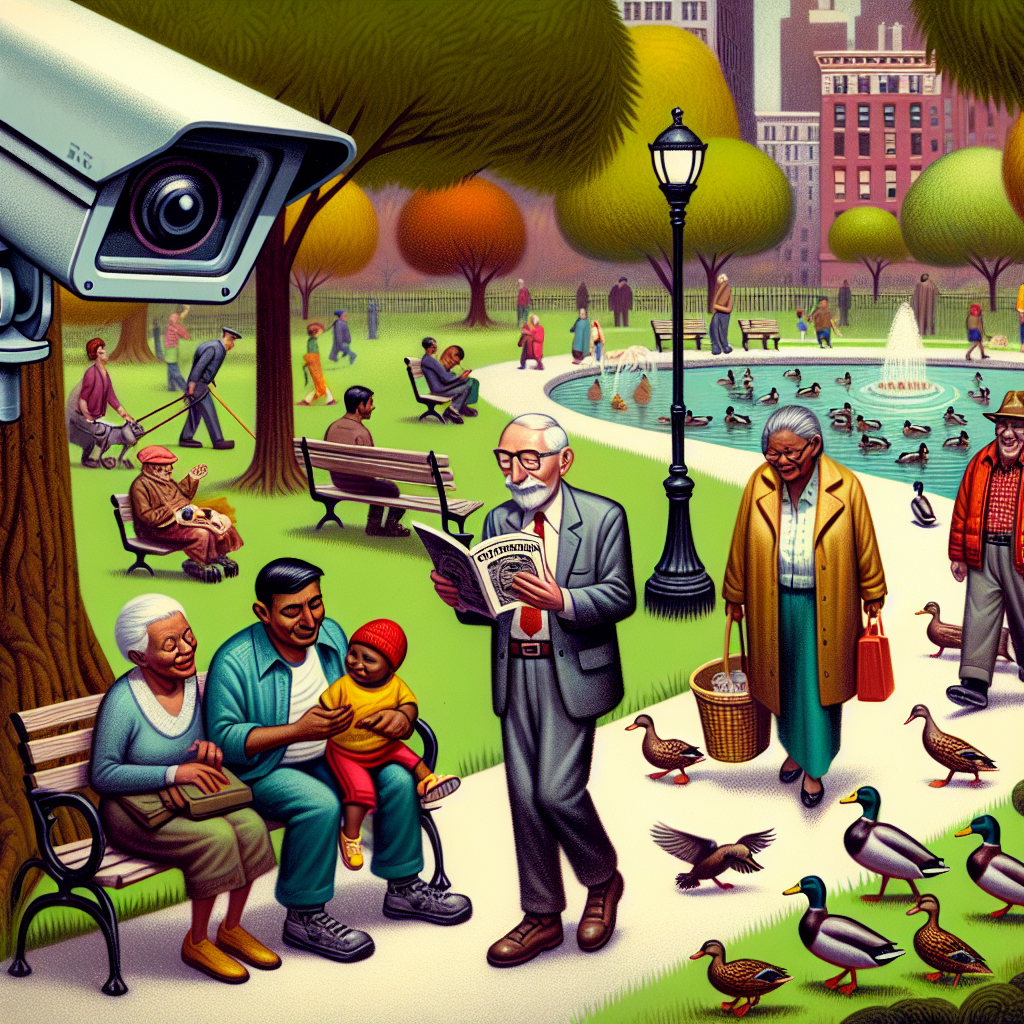"Between Safety and Surveillance: Chesterburgh’s Ethical Reckoning with Facial Recognition in Martinson Park"

“He who fights with monsters should look to it that he himself does not become a monster.” Thus spake Friedrich Nietzsche, a cautionary admonition now peculiarly apt as Chesterburgh confronts the ethical complexities of newly installed facial recognition cameras in Martinson Park. This seemingly innocuous technology, unveiled with great fanfare last month, has generated a maelstrom of debate, illuminating the tension between public safety and personal privacy in a small town ostensibly insulated from such modern quandaries.
Martinson Park, a verdant centerpiece of Chesterburgh’s communal life for over half a century, has historically been a site of respite and conviviality. Families stroll along the meandering paths, and children frequent the playgrounds under the benign gaze of willow trees. Yet the installation of six surveillance cameras equipped with facial recognition software, ostensibly to deter vandalism and enhance public security, has transformed this bucolic refuge into an arena for a deeper philosophical debate about the nature of observation and consent in public spaces.
The project, spearheaded by Chesterburgh’s Public Safety Committee and funded through a combination of municipal allocations and a private grant from a local tech entrepreneur, was presented at the February town hall meeting as a progressive step toward crime reduction. According to Chief of Police Helen Martins, “The analytics embedded in these cameras will enable us to swiftly identify suspects enduring patterns of illegal activity, reducing response times and potentially deterring crime altogether.” Initial pilot data, she asserts, show a 12% decrease in petty theft and vandalism within the park boundaries.
Nevertheless, the adaptation of facial recognition technology in a public park raises substantial concerns. Critics, including members of the Chesterburgh Civil Liberties Union (CCLU), argue that the technology infringes upon residents’ rights to anonymity and open public space. “We walk in these parks expecting to be free from constant surveillance,” stated CCLU spokesperson Dr. Miriam Laskin. “The line between safeguarding and infringing upon personal freedoms is perilously thin, especially when the data collected can be stored indefinitely or repurposed.” This opposition has prompted petitions and public forums where the ethical implications of the technology are vigorously contested.
At the heart of the controversy lies not only the efficacy of the system but its philosophical implications. What does it mean to be seen—and potentially recorded—simultaneously as a citizen and as a suspect? How does this shift the dynamics of public space participation? Chesterburgh resident and retired philosopher Dr. Eleanor Whitman muses, “When surveillance becomes ubiquitous, our behaviors adapt not purely from legal obligation but from an internalized sense of observation. The ‘eyes’ of the watchman become an omnipresent gaze that disciplines us, shaping how we inhabit communal spaces.” Such an effect, she warns, risks ossifying the vitality that casual anonymity confers upon the democratic experience of public spaces.
The town council, while acknowledging these concerns, stresses that data collection protocols include stringent safeguards: footage is encrypted, access is limited to authorized personnel, and data is reviewed regularly to purge irrelevant information. In addition, the Council plans to hold periodic public disclosures regarding the technology’s operation and findings, underscoring a commitment to transparency. Yet, even these measures have not assuaged those who fear the inevitable creep of surveillance from parks to sidewalks, schools, and beyond.
Amidst the discourse, the practical effects on marginalized groups have emerged as a salient concern. Local advocacy groups remind Chesterburgh that surveillance technologies have historically been marred by biases, often disproportionat
